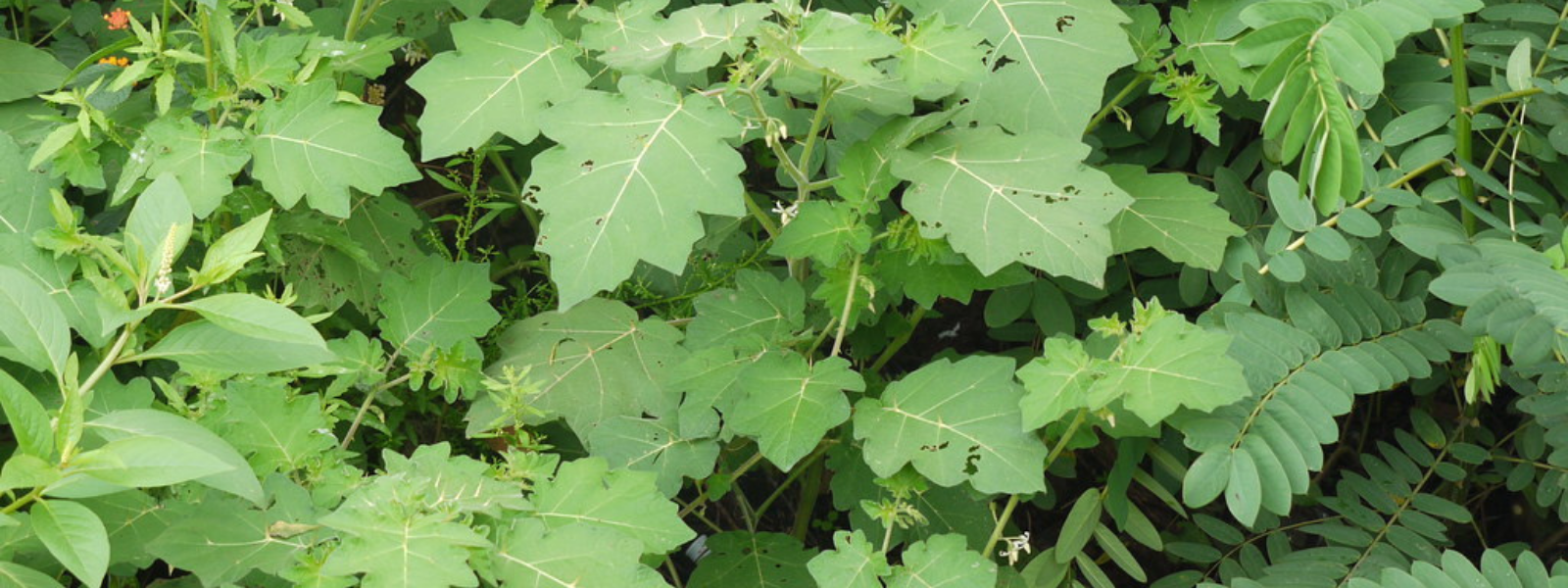
Common Name
Tropical soda apple, Soda apple, Devil's apple
Scientific Name
Solanum viarum
Family
Solanaceae
Lifecycle
Perennial
Seasons of Growth
Year-round
Key Distinguishing Feature
Spiny shrub with small, round fruit
Growth Form: Tropical Soda Apple is a thorny shrub that can reach heights of up to 3 meters (10 feet). It has a bushy growth habit.
Leaves: The leaves are alternate, simple, and oval to elliptical in shape. They are typically dark green and have wavy or serrated margins.
Flowers: The flowers are small and typically white to pale yellow. They are borne in clusters.
Fruit: The fruit of Tropical Soda Apple is a small, round, and fleshy berry that turns yellow when ripe. It contains numerous seeds.
Thorns: The plant is armed with sharp thorns along its stems.
Ecological Impact:
- Tropical Soda Apple is considered invasive in many regions outside its native range, including parts of the United States, South America, and other tropical and subtropical areas. It can form dense thickets and outcompete native vegetation.
- It is also a host plant for the tomato-potato psyllid (Bactericera cockerelli), which is a vector for the bacterium causing citrus greening disease (huanglongbing) in citrus crops.
Control Methods:
- Control of Tropical Soda Apple often involves a combination of mechanical, chemical, and cultural methods.
- Mechanical methods may include cutting, mowing, or grazing with livestock that can consume the plant.
- Herbicides may be used for control, but care must be taken to use them safely and effectively, following local regulations.
- Preventing the spread of Tropical Soda Apple through the dispersal of seeds or contaminated equipment is important.
Tropical Soda Apple is a highly invasive plant that poses ecological and agricultural threats in many regions. Active management is necessary to prevent its spread and protect native ecosystems and agricultural crops. Local agricultural and environmental agencies often provide guidance on the best control practices for this invasive species.
Key Products for Control:
-
Aminopyralid - Grindstone Adama
Flowering up to 1 m tall 12 mL 350 mL
Add Spraying Oil at 0.5%.
-
Grazon Extra - Aminopyralid, Triclopyr & Picloram Herbicide
Flowering up to 1 m tall 350 mL
Add Spraying Oil at 500 mL/100 L water.
-
Farmalinx_SixGun-360-Glyphosate_Label
(Likely less effective, but safer to use in sensitive areas)




